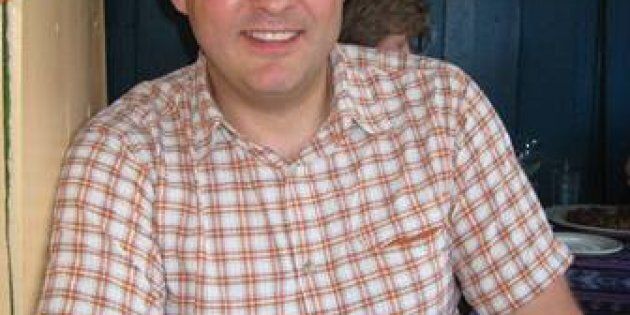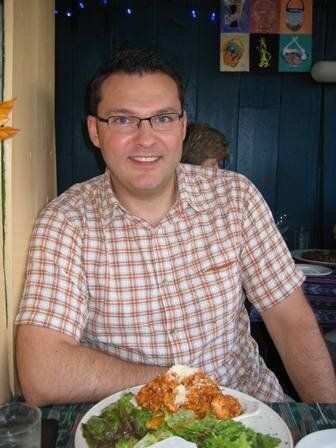

The company:
Mike Landry is a physiotherapist, Division Chief in the Doctor of Physical Therapy Program in the Department of Community and Family Medicine at Duke University, former professor at University of Toronto, and a 15-year veteran of global rescue missions. I heard about Mike through a documentary about his original mission to Haiti shortly after the devastating earthquake in January 2010. He spoke about the work he did to help those with spinal cord injuries as a result of the earthquake and subsequent recovery effort. He then went back several months later to check on the progress of his patients and what he discovered led him to ask some very difficult questions about the responsibility of aid. When does it start? When does it end? I found the story very thought-provoking and wanted to hear from Mike himself.
The food:
Mike and I ate at a café on Baldwin Street in Toronto. Baldwin Street is one of those great hidden spots in Toronto. I had the Mediterranean vegetable pizza with salad and Mike had the risotto special with salad. We both drank water. The portions were huge, which I always appreciate. I did find the pizza a bit difficult to cut through but it was still great, tons of feta cheese! Total bill was $34 with tax.
The lunch lesson:
Mike talked to me about the type of person that is able to go on these global aid missions and was very clear that it is not for everyone. The images he sees are not something that he can forget and he said that every aid worker must have some amount of post-traumatic stress disorder. He says he can't even fully discuss what he sees and does with all people because it is too difficult to hear. What really got to me was that Mike and his colleagues choose to put themselves in these positions. But what about those that live there and have no choice but to see the devastation day in and day out? It's hard to imagine what that must be like and the thought has really stuck with me since our lunch.
The lunch:
Ever since I was young, I had an understanding that there were people in other parts of the world that had far less than I did and, like many others in my shoes, had this drive to do something to help. But the problem is, what do you do and how can you help? Mike Landry first felt this feeling when he watched Live Aid as a child and the drive did not go away. For over 15 years, he has been going to areas all over the world and helping out.
I asked him if he was ever scared and he told me he never was until recently, when he had children. When he first saw the images coming back from Haiti after the earthquake, he decided he couldn't go this time. His daughter was very young and he didn't want to put himself at risk. Mike told me he was able to hold himself from going for a week and then he just had to go. Once he knew he was going, he was in Haiti within a couple of days.
In Haiti, Mike helped those that were suffering from spinal cord injuries. He said many of these people had pulled themselves, with very serious injuries, out of the rubble on their own. Others had fallen while working to help rescue others and clear rubble. Not that many years ago, these people never would have survived -- these injuries would have meant certain death. But Mike and the rest of the team in Haiti were able to help them. Many they saved are now able to have some level of mobility.
A few months after the earthquake, Mike returned to Haiti to check back in on his patients and help them return home. To this day, rubble still covers the streets of Haiti and it is shocking to see. For someone with mobility issues, it is very difficult to get around.
He brought one woman, who is paralyzed, to her home that was so difficult to access that they could not even bring her home on her wheelchair and instead had to carry her on a stretcher. Once home, Mike wondered whether she'd ever be able to leave. And these are the questions that now haunt Mike and many other aid workers.
They saved these lives but now what? How can the massive global aid dollars respond appropriately to help these survivors and communities? I, of course, do not have the answers but I think it's something that needs to be addressed. The funding is there but it's far more complicated than simply spending money.
Mike has just embarked on a new adventure at Duke University and is teaching physiotherapy students who will continue the work he does now. With advances in medicine, there is the opportunity to save so many more lives than before. It is my hope that long-term aid will be part of the solution and will address quality of life. With someone as committed as Mike championing this cause, I believe we're on the right track.